 Hils Everitt – Editor at Large
Hils Everitt – Editor at Large
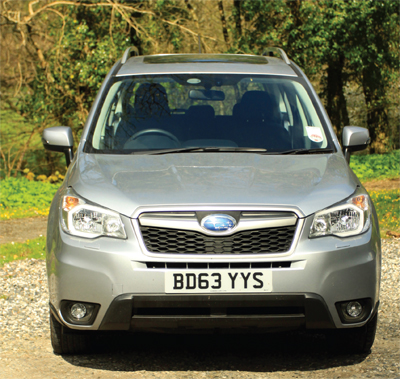
Last month I pointed out a few negatives about our long-term Forester in the mechanical department. But there are many things I do like about it. Apart from the styling, which many find bland, but I rather like, and its typical Subaru solidly-built body work, excellent electrical seating adjustments and unfussy interior which retains its credentials as more of a workhorse than its prettier and more cluttered peers within the huge SUV crossover sector, there are some great practical attributes that have impressed.
For starters there’s the rear view camera that our XC Premium spec includes. My 09 Jeep Grand Cherokee Overland which would have been many tens of thousands of pounds new, has a rear view camera, but it is rather blurry with not the best reproduction. The Subaru’s, however, is very un-blurry to the point that I was very surprised at its clarity and definition. Rear view cameras have always perturbed me (and the Editor it seems, in his report on the Freelander this issue!) and it has taken a while to get used to them and trust them without looking in door mirrors while reversing. As my Grand’s is not the best view, I tend not to look at it a lot and follow the old traditional method of constantly flicking my eyes from each mirror. The Subaru’s, however, is so clear and with the guiding red, yellow and green lines makes you put your wholehearted trust in that little screen on the dash.

 Off-Road Vehicle Design has proved to be very popular in recent years and still remains a key course at Harper Adams University. located just outside Newport, Shropshire. In addition, the university is the only higher education establishment in the UK where students can study the topic to honours degree level. The course is designed to help students develop technical and business skills so that they may pursue careers as design engineers, test and development specialists, technical advisors and engineering and dealership managers within the 4×4 sector.
Off-Road Vehicle Design has proved to be very popular in recent years and still remains a key course at Harper Adams University. located just outside Newport, Shropshire. In addition, the university is the only higher education establishment in the UK where students can study the topic to honours degree level. The course is designed to help students develop technical and business skills so that they may pursue careers as design engineers, test and development specialists, technical advisors and engineering and dealership managers within the 4×4 sector.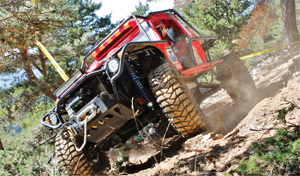 Factory fresh 4x4s are capable vehicles, but any owner can opt for a huge choice of extras and upgrades to give a more personal, customised, competition aware look. A truck designed for Challenge events can give an owner one of the most purposeful, versatile and best looking 4x4s out there. The prospective Challenge truck owner can happily outsource the work to a specialist to turn their dream into reality, whether that means supplying and fitting accessories, or completing turnkey Challenge builds ready to rock ‘n’ roll. Perhaps there’s a need to do it all yourself; many owners take a huge amount of satisfaction in doing the work themselves or with friends and fellow clubmates, and it’s a tribute to their individuality that no two Challenge 4x4s are ever the same.
Factory fresh 4x4s are capable vehicles, but any owner can opt for a huge choice of extras and upgrades to give a more personal, customised, competition aware look. A truck designed for Challenge events can give an owner one of the most purposeful, versatile and best looking 4x4s out there. The prospective Challenge truck owner can happily outsource the work to a specialist to turn their dream into reality, whether that means supplying and fitting accessories, or completing turnkey Challenge builds ready to rock ‘n’ roll. Perhaps there’s a need to do it all yourself; many owners take a huge amount of satisfaction in doing the work themselves or with friends and fellow clubmates, and it’s a tribute to their individuality that no two Challenge 4x4s are ever the same. 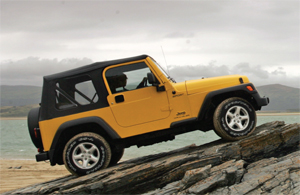 Some 4×4 enthusiasts might be excused for thinking that most manufacturers of four-wheel drive cars have lost the plot, putting the emphasis on sleek style, comfort and refined road manners at the expense of off-road capability. The truth is they’ve written a new script in which the SU of SUV stands for Significantly Upperclass rather than Sports Utility, with very profitable results. Even Jeep, the company that set the whole recreational off-road ball rolling 60 years ago, has succumbed to the lure of the mainstream big buck by aiming their new Cherokee squarely at socialite suburbia with none of the genuine utility of the original Cherokee.
Some 4×4 enthusiasts might be excused for thinking that most manufacturers of four-wheel drive cars have lost the plot, putting the emphasis on sleek style, comfort and refined road manners at the expense of off-road capability. The truth is they’ve written a new script in which the SU of SUV stands for Significantly Upperclass rather than Sports Utility, with very profitable results. Even Jeep, the company that set the whole recreational off-road ball rolling 60 years ago, has succumbed to the lure of the mainstream big buck by aiming their new Cherokee squarely at socialite suburbia with none of the genuine utility of the original Cherokee.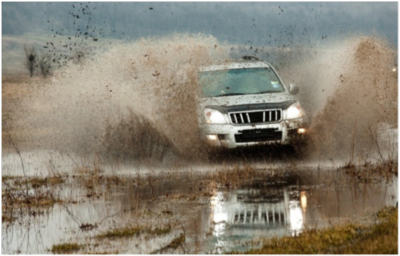 If you’re really serious about losing weight, you want to do everything possible to shift a few extra pounds here and there. You might be surprised to realise that there are a few things you can do to help you lose weight while driving. The following tips aren’t going to get you to do exercise at the wheel or anything like that – they’re going to prevent you from eating while driving, which will in turn prevent you from putting on more weight. It’s very easy to eat while driving somewhere.
If you’re really serious about losing weight, you want to do everything possible to shift a few extra pounds here and there. You might be surprised to realise that there are a few things you can do to help you lose weight while driving. The following tips aren’t going to get you to do exercise at the wheel or anything like that – they’re going to prevent you from eating while driving, which will in turn prevent you from putting on more weight. It’s very easy to eat while driving somewhere. Within the motoring world, it is generally agreed by the retail experts that 4×4 owners are far better informed, generally, when it comes to the rubber wear that holds up their vehicles compared to their mainstream peers.
Within the motoring world, it is generally agreed by the retail experts that 4×4 owners are far better informed, generally, when it comes to the rubber wear that holds up their vehicles compared to their mainstream peers.  Bob Cooke – contributor
Bob Cooke – contributor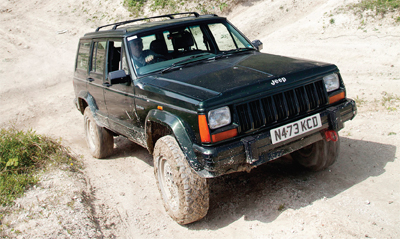 Had it been a rainy day we probably wouldn’t have got anywhere. At first glance, especially from the superbly scenic viewpoint of our picnic spot overlooking the green expanse of Bedfordshire extending to the horizon, it’s hard to understand why they call it Devil’s Pit because the first view of it is a broad field with a bit of a rise at the far end. There are, however, two factors that lift it above the seemingly mundane bit of field-crossing – one being the chalky surface of the tracks which turn treacherously greasy when wet, the other being the demanding selection of rutted, steep-sided hollows hidden away behind the trees in the north-west corner of the site. No wonder the site personnel are so keen to ensure that cars using the black-run section in this area are roll-caged and all occupants are harnessed in and protected by helmets.
Had it been a rainy day we probably wouldn’t have got anywhere. At first glance, especially from the superbly scenic viewpoint of our picnic spot overlooking the green expanse of Bedfordshire extending to the horizon, it’s hard to understand why they call it Devil’s Pit because the first view of it is a broad field with a bit of a rise at the far end. There are, however, two factors that lift it above the seemingly mundane bit of field-crossing – one being the chalky surface of the tracks which turn treacherously greasy when wet, the other being the demanding selection of rutted, steep-sided hollows hidden away behind the trees in the north-west corner of the site. No wonder the site personnel are so keen to ensure that cars using the black-run section in this area are roll-caged and all occupants are harnessed in and protected by helmets. Louise Limb
Louise Limb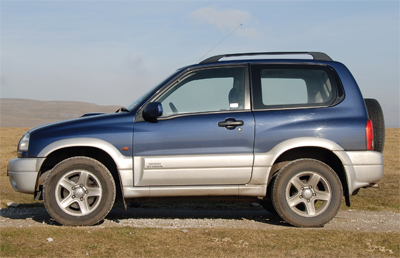 As June and MOT time approached, the ominous bumping sounds from beneath the Freelander became louder. I’d say, ‘surely you can hear that now?’ as we’d encounter a minor road hump and looking round the delightful leather cabin. I’d think, ‘it’ll never pass its MOT and the costs will mean sayonara for our well travelled friend’. One day, taking my daughter, two grandsons and my mother-in-law around Southport, I realised that the familiar strange creaking from under the rear seat that accompanied every journey had stopped. Some weight on the rear seat was all that was needed to cure that noise! I felt sure the other rumblings were serious and was dumbstruck when my regular mechanic Phil emerged to say there was nothing wrong with the elderly Land Rover; not even the tiniest advisory.
As June and MOT time approached, the ominous bumping sounds from beneath the Freelander became louder. I’d say, ‘surely you can hear that now?’ as we’d encounter a minor road hump and looking round the delightful leather cabin. I’d think, ‘it’ll never pass its MOT and the costs will mean sayonara for our well travelled friend’. One day, taking my daughter, two grandsons and my mother-in-law around Southport, I realised that the familiar strange creaking from under the rear seat that accompanied every journey had stopped. Some weight on the rear seat was all that was needed to cure that noise! I felt sure the other rumblings were serious and was dumbstruck when my regular mechanic Phil emerged to say there was nothing wrong with the elderly Land Rover; not even the tiniest advisory. Nigel Fryatt – editor
Nigel Fryatt – editor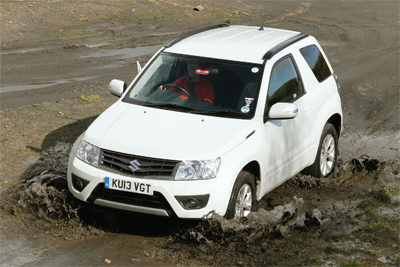 When Suzuki’s small, three-door Grand Vitara arrived at the magazine, I did wonder if it would actually impress. It was effectively replacing my tough, black Toyota Hilux – as ‘macho’ a truck as you can find on and off the road; the Vitara certainly had a softer appearance. Despite this, it fitted the bill, being one of the few remaining ‘soft-roaders’ that actually has a low range gearbox, which certainly increases its capabilities.
When Suzuki’s small, three-door Grand Vitara arrived at the magazine, I did wonder if it would actually impress. It was effectively replacing my tough, black Toyota Hilux – as ‘macho’ a truck as you can find on and off the road; the Vitara certainly had a softer appearance. Despite this, it fitted the bill, being one of the few remaining ‘soft-roaders’ that actually has a low range gearbox, which certainly increases its capabilities.  TARGET RANGE: £5000 – £18,000
TARGET RANGE: £5000 – £18,000